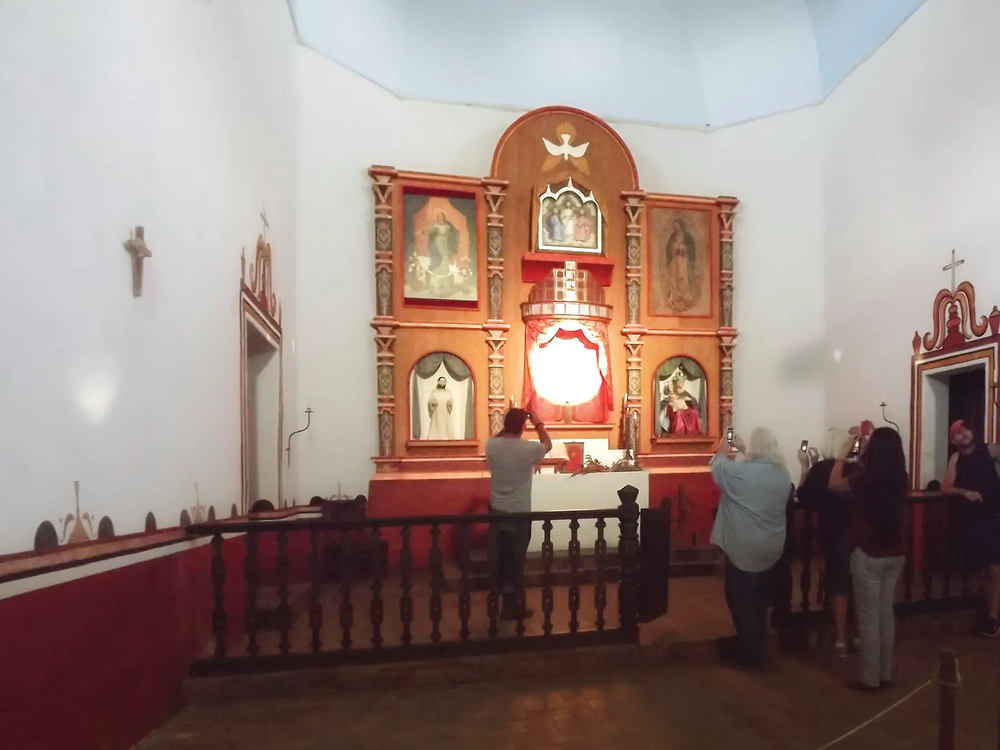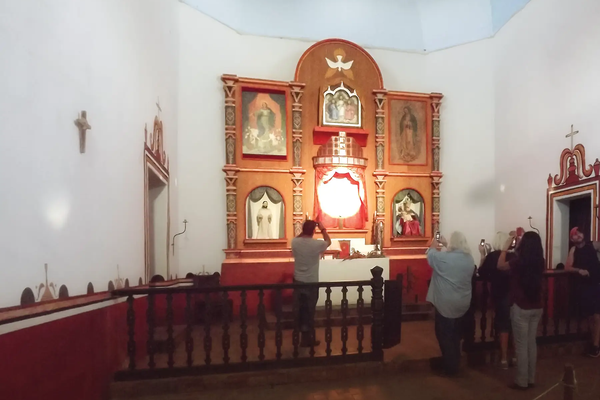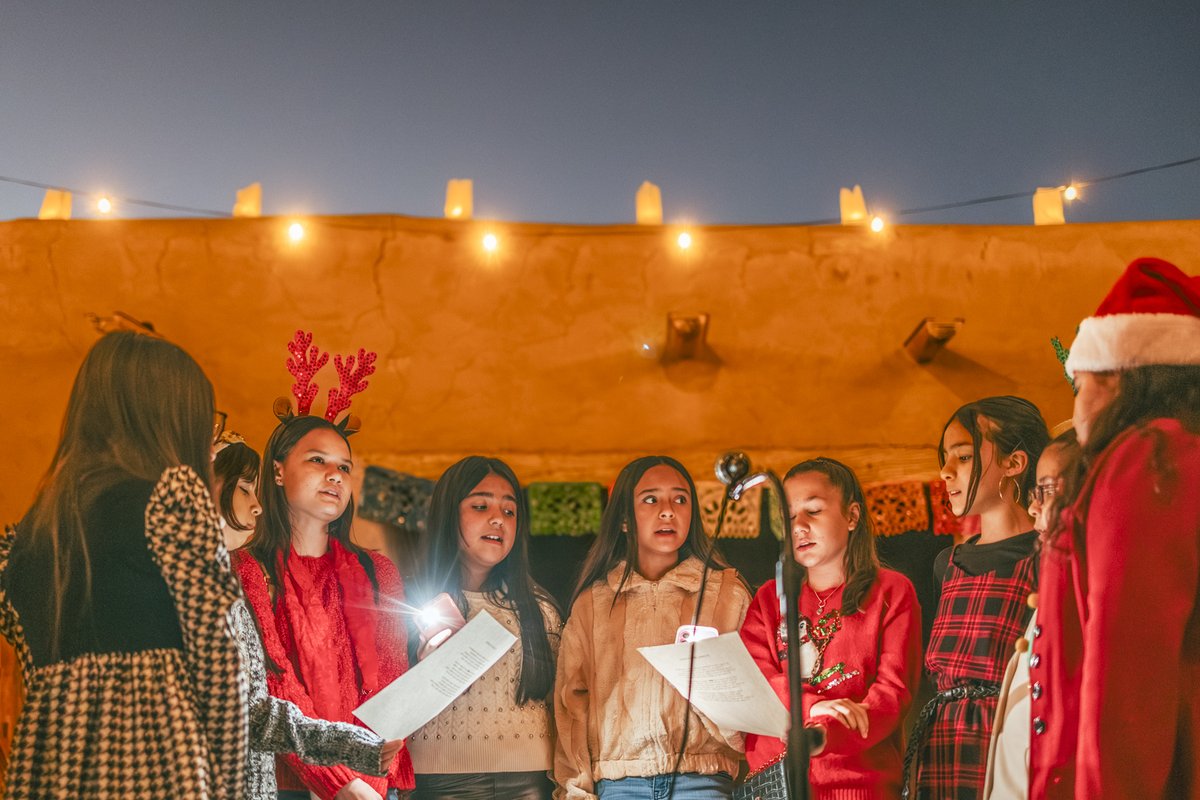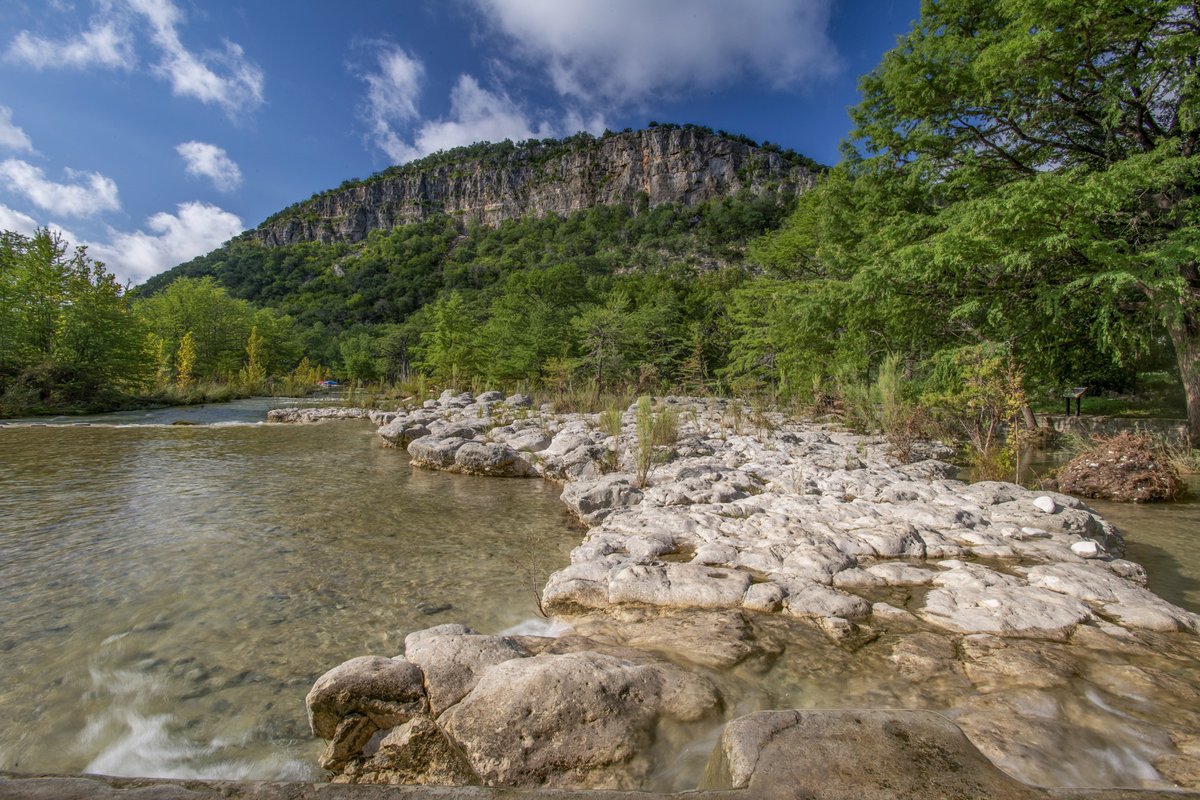Each year on April 16, the setting sun sinks past the lime-white walls of Goliad State Park’s Mission Espíritu Santo and settles for a brief moment, framed in a round window two-thirds of the way up the church’s western face. The window is painted inside with yellow-orange rays; as the sun hits, it channels the light onto the altar of the church, illuminating the figure of Jesus on the cross. The event can feel spiritual and moving — and exactly why it happens remains a mystery.
Catholic religious architecture is known for these “illuminations.” They are often timed to a specific seasonal occurrence, such as Catholic holy days. This one, occurring annually on April 16, lines up with the founding of the Franciscan religious order, a branch of the Catholic faith started by St. Francis of Asisi in the 13th century.
Franciscans came to what is now Texas in the late 1600s, and Mission Espiritu Santo was built at its current location in 1749. The mission was abandoned in the 1830s and fell into disrepair; by the time the land was acquired by the State of Texas in 1931, the church was a pile of ruins.
In the 1930s, the mission chapel was reconstructed by members of the Civilian Conservation Corps, who had never seen the original church and did not have access to the Spanish builders’ plans. The CCC workers had to work from only the foundation, and followed the traditional proportions of Franciscan architecture to make the reconstruction as accurate as possible.
One thing they got wrong, though, was the altar. In the 1970s, scholars of Spanish colonial history pointed out that the altar would actually have looked very different, and they set to work restoring it to be more historically accurate — an effort that included moving the figure of Jesus on the cross to a new location. The restoration was completed in the 1970s, and then decades later park officials first noticed the illumination.
Jared Ramirez, the park superintendent, began working at the park in 2014, and has been fascinated by the illumination for years.
"I've always kind of wondered if somebody in the 1970s planned it, but there's no record of anyone doing this thing," he says. "I might actually be kind of bummed out if I found an official record or statement saying what it was or who did it.”
For now, the mystery is part of the experience.
“I can’t stand up as any kind of academic figure or give an official agency stance on what this is,” Ramirez says. “But what I can do is invite people in to look at this really amazing event. It’s impressive, no matter what’s going on. When it happens, there can be 100 people in that chapel, and they will all be silent at the same time.”









